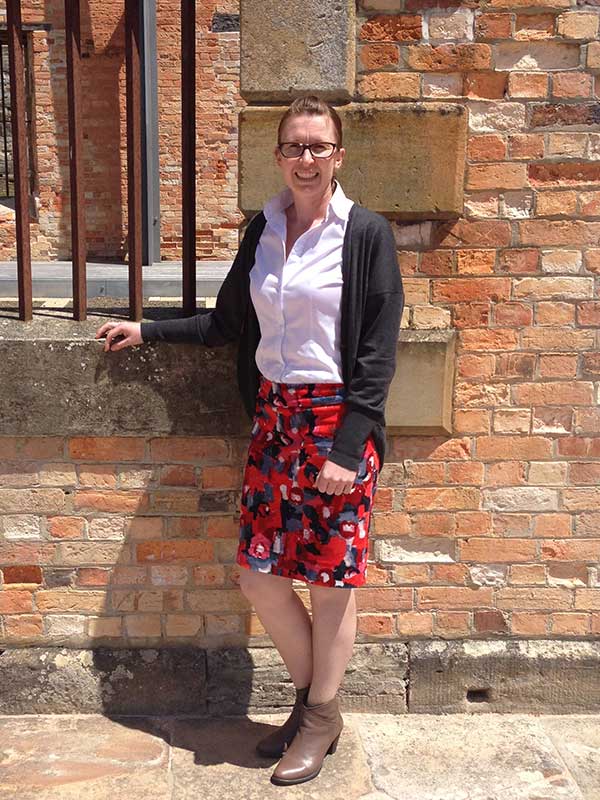Call for park managers to be more radical and flexible when managing cultural and natural values
Research news
Paulette Wallace’s PhD ends with an apology — for not coming up with a templated set of directives on how the heritage values of places like Matiu/Somes Island in New Zealand should be managed in post-Treaty settlement New Zealand.
“Even as I got close to finishing this thesis, I still held tight to the belief that in its final pages I would chisel out the exact formula for New Zealand’s cultural landscapes approach,” Dr Wallace says in the conclusion of her thesis.
“Yet the more I tried to write a formulaic conclusion, the more I realised that perhaps this was not the answer at all, especially when I reflected on my experiences at Turangi in the shadow of Mount Tongariro.”
Dr Wallace, a PhD candidate with the Alfred Deakin Institute for Citizenship and Globalisation, instead calls on park managers to be more radical in the way they apply cultural landscape management approaches to the protected areas in their care.
“Cultural landscape is an enabling term, not a category or a site term,” she said.
“It is more than a visual representation or a view.
“Cultural landscape thinking promotes the need to take a wider consideration of what is valued.”
Dr Wallace’s PhD journey began when she was working as a historic ranger with the Department of Conservation in New Zealand.
“I started to ask if there were better ways to manage the Maori and Pakeha (non-indigenous) heritage values alongside the natural values,” she said.
“The idea of recognising natural, Pakeha and Maori values in isolation from each other seemed to be a distinction made by an earlier generation of park managers, rather than the reality I was working with on Matiu/Somes Island.”
Dr Wallace's reading on cultural landscapes revealed the connections between her work in historic, or cultural heritage, and her colleagues’ work in natural heritage.
“I believed that a cultural landscape approach had the potential to integrate and dissolve the distinctions between nature/settler/indigenous heritage values,” she said.
“The only issue was that the cultural landscapes approach was not being used in New Zealand.”
Her initial investigations revealed Australia was further along the road in implementing the cultural landscapes concept, but left her also wondering what was behind the difference between the two countries’ approach.
“I hoped my research would allow me to recommend broader changes for heritage management throughout New Zealand, and perhaps even for heritage management in other countries with similar colonial legacies,” she said.
Her research took her to NSW, the United States and Canada where she investigated how each of the parks' services engaged with, and implemented the ideas of cultural landscapes.
“Cultural landscape is a term created by cultural geographers in the 1920s to signify the way that people interact with their surroundings,” she said.
“The land we live on has been shaped by us. But natural forces shape how we interact with it.”
Dr Wallace said trying put a management framework around that interaction was a challenge.
“You have the nature guys and the cultural guys, with each making their approach mutually exclusive.
“The structure is also cemented in legislation.
“The way that the management plans for protected areas such as national parks work, doesn’t recognise the fuzzy interaction between culture and nature.”
This was why her PhD avoided templates and checklists.
“I say this approach doesn’t work,” she said.
“You cannot have templates when you talk about managing cultural landscapes.”
“But while templates weren’t ideal, there does need to be a soft level of codification to ensure recognition at the higher levels. Those working at the grass roots easily use these concepts, but the cultural landscapes approach needs to have recognition at policy and legislative levels so there is organisational support and resourcing from those charged with managing the cultural landscape.”
Dr Wallace said more needed to be done to encourage interdisciplinary teams to work in cultural landscapes and to be much more flexible.
“We need to become comfortable with being uncomfortable,” she said.
“The great thing with a cultural landscapes approach is that when you become part of it, you have to acknowledge that there are these cultural understandings.
“It is a term that indigenous groups are often more comfortable using and a word that helps them convey their connection with the world to non-indigenous heritage managers.”
Dr Wallace said her supervisors Professor Andrea Witcomb and Ms Kristal Buckley played a central role in her journey.
“Without them I couldn’t have done it,” she said. “We had a really good team dynamic.
“Andrea brought her experience in relation to running the PhD process and theory, while Kristal contributed input on the current state of heritage practice, informed by her extensive career working as an international cultural heritage advisor.
“It was great to have regular meetings with the three of us. It enabled discussion that you wouldn’t normally get if it was just a supervisor and a student — having that third person generated a lot of debates.
“It was a joy to work with them, but it was so challenging.”
Dr Wallace is now the Executive Officer for the serial World Heritage property of the Australian Convict Sites.
Share this story

Key Fact
Dr Wallace’s research took her to NSW, the United States and Canada where she investigated how each of the parks' services engaged with, and implemented the ideas of cultural landscapes.
